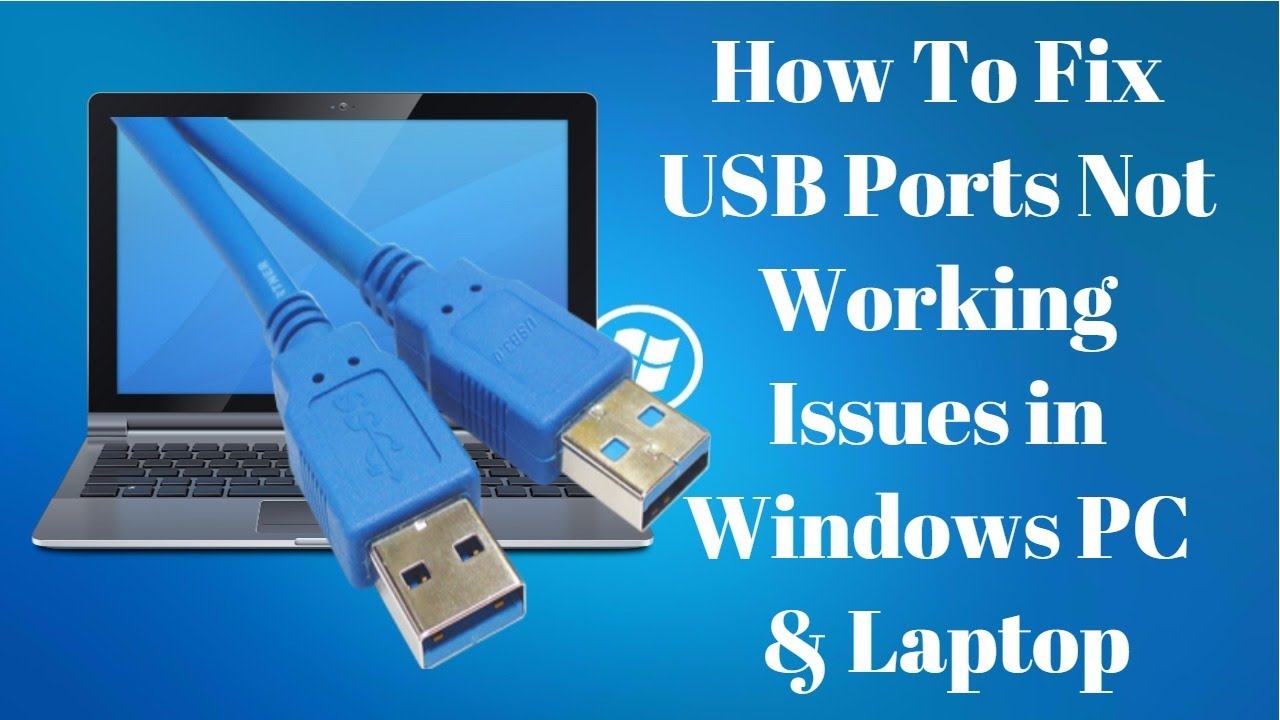USB ports are the most popular interface, compatible with a wide range of devices. But sometimes it happens that they stop working for no particular reason. There are a few ways to solve this problem. Keep reading the article to know them.
Reboot your computer
Before taking any steps, try the old technical troubleshooting method: turn off your computer and turn it back on. This sometimes helps by forcing the operating system to scan for hardware, such as a USB port, and restore it to work.
Diagnostics of the USB connector
First of all, you need to make sure that the problem is in the USB connector, and not in the device we are connecting. The easiest way to do this is to connect another device that you know is working. The same applies to the cords that are used to connect external devices – it is important to make sure that they are working properly.
Pay special attention to USB hubs and extension cords. Some devices simply do not work through them. At the same time, the port of the laptop itself, into which the hub is inserted, functions perfectly. Therefore, it is important to check the connector when connecting the device directly, without various adapters.
Disconnecting other USB devices
Sometimes USB ports do not work due to overload when too many USB devices are connected. Sometimes it happens that USB hubs don’t provide enough power for the connected devices. The device is able to consume all the allowed power of the USB controllers. If the equipment is connected to a USB hub, you can simply connect the device directly to a USB port on your computer.
You can also leave the device connected to the USB hub, but disconnect the other devices in the hub first. In the future, it is possible to purchase a USB hub with its own power supply, which will provide sufficient power to all devices connected to it.
If none of the above methods helped, then it is likely that the USB ports have been physically damaged. Either the USB controller is damaged, in particular the south bridge of the motherboard. In this case, the best you can do is have your USB controller replaced or repaired at a service center.
Disconnecting the USB controller
Another way to get the USB ports to work is to disable and then reinstall the USB controller. To do this, you need to start the Device Manager. In the list of equipment, find the USB controllers section. On each of the devices in this section, right-click and remove them all.
IMPORTANT! (If you use a USB mouse or keyboard, they will stop working after removing a specific driver from this list. Restart, everything should be fine again.)
After the controllers are removed, you just need to restart your computer. The controllers will be reinstalled and the USB ports will be available again. This might fix the problem.
BIOS settings
BIOS is a kind of command center for managing the system. Many of its parameters affect the operation of the PC and nowhere else you have access to them. The USB port settings are also located in the BIOS. Some older motherboard models do not have the most universal default configuration. Therefore, if for some reason your settings were rolled back to default, then the USB ports could be disabled. Or if the ports do not work from the very first start of the computer.
To solve the problem, you need to go to the BIOS and make sure that the following parameters are activated:
- USB Controllers
- USB Legacy Function
- USB Storage Function
These options are usually found on the Advanced tab. If none of the ports are working and you cannot use a USB keyboard, then try choosing a device that is compatible with the old PS/2 interface.
By the way, this is one of the few reasons why such an outdated format is still present in modern motherboards. Just for solving similar problems.
Drivers
The USB ports require drivers to work. They are installed automatically. But there may be problems with their determination by the system.
- Open the Device Manager.
- In the USB Controllers section we find the Extensible Host Controller device.
- Right-click on it and select the Update hardware configuration option.
If there is no such device in the list, then this may be one of the reasons for the breakdown of the USB port. To get it back, we update the configuration of all USB controllers. To do this, right-click on the section of the same name and select the corresponding option in the context menu.
If updating the configuration of the host controller did not help, delete it through the same context menu. Nothing bad will happen – after restarting the laptop, it will reappear in the system, and its drivers will be reinstalled.
It is worth paying attention to other controllers as well. An exclamation point next to a device indicates that it is not working properly. Updating the configuration or uninstalling and rebooting the system will help resolve this issue.
USB controllers also need drivers to work correctly. In the Device Manager you can see if they are working as expected. If you see a yellow sign, this is the first sign of a driver conflict.
In the driver packages, most likely, you will find exactly the ones you need. It will not be superfluous to update drivers for the motherboard chipset, to which the rear USB outputs are directly related. Some users have noted that replacing the CMOS battery can fix the problem.
In order not to have any driver issues in the future it is highly recommended to keep them updated. Use special software for the automatic update outdated drivers.
Hope our article will help you to fix the issues with USB. Or if you have other ideas regarding it kindly leave your suggestions in the comment section below.

